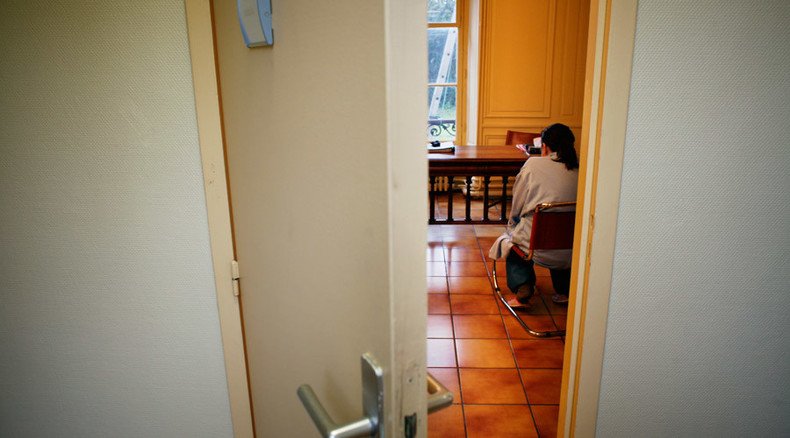US faces severe shortage of psychiatrists as demand grows – report

The majority of US states face a shortage of psychiatrists, while the need for specialists is growing. Health care providers and policymakers are working on ways to attract new talent, but many medical students are reluctant to take up the call.
According to a recent study by the Association of American Medical Colleges, 59 percent of psychiatrists are 55 or older, the Associated Press reported, making them the fourth oldest group of doctors practicing in 41 medical specialties. Consequently, it is very likely that many will soon retire or accept fewer patients.
In the 18 years between 1995 and 2013, the total number of adult and child psychiatrists in the US rose by just 12 percent, from 43,640 to 49,079, while the number of physicians grew by 45 percent. During that time, however, the US population increased by about 37 percent, the Association’s statistics show. In addition, millions of Americans have become eligible for mental health coverage under the Affordable Care Act, also known as Obamacare.
“I’m not aware of any part of the country where it is easy for our members to find psychiatrists,” Charles Ingoglia, a vice president of the National Council for Behavioral Health, told AP. The council coordinates a network of 2,300 not-for-profit clinics nationwide that provide psychiatric help.
Across much of US, a serious shortage of psychiatrists http://t.co/a0QdLJDKuWpic.twitter.com/8jzoSkHjXV
— Fox News Health (@foxnewshealth) September 8, 2015According to federal health authorities, there are about 4,000 areas nationwide where there is only one psychiatrist for every 30,000 patients, and with the colossal paperwork requirements imposed by Medicare and private insurance companies, doctors have less time than ever for treating patients.
“That interferes with our ability to have the time to sit with our patients,” Dr. Renee Binder, president of the American Psychiatric Association, told AP. “We need to decrease the administrative burden and increase the compensation.”
According to AMN Healthcare, a health care staffing company, the states of Massachusetts, Rhode Island, Vermont, Connecticut and New York have more than 15 psychiatrists per 100,000 people, while Wyoming, Texas, Iowa, Mississippi, Indiana, Nevada and Idaho have fewer than six.
READ MORE: Computer can predict if you'll develop psychosis with 100% accuracy – study
The government has been trying to fill the gaps by trying to encourage more students to specialize in psychiatry. In Texas, lawmakers recently voted to forgive the student loans of those who are willing to work as child psychiatrists and pay the loans of those choosing to work in poorer areas.
However, there are at least two major concerns that seem to prevent the younger generation from choosing psychiatry. While they might be interested in scientific developments in psychiatry, the profession’s lack of prestige and lower annual wage compared to other fields are demotivating factors – the mean annual wage for a psychiatrist is $182,700, or 28 percent lower than that of surgeons. Some specialists are switching to a cash-only practice.
“There remain issues of stigma around mental disorders,” Dr. Darrell Kirch, president of the Medical Colleges Association and a psychiatrist by training, told AP. “The people who suffer most from that are the patients, but we still see cases where psychiatry is devalued by some in the medical profession.”
‘Super-smart mice’ might help cure Alzheimer’s and schizophrenia – study http://t.co/gSLeDu7Ogwpic.twitter.com/fdl0GBPXKh
— RT (@RT_com) August 15, 2015Mental health experts see two major solutions that can help improve the situation quicker than others.
One is to embrace technology and make psychiatric telemedicine a wider practice. That would help psychiatrists to practice in larger regions, and give them better access to patients with limited mobility. Several states, including South Carolina, North Carolina and Michigan, use extensive telepsychiatry programs. Though there are concerns about the lack of face-to-face interaction, doctors practicing in the program say it has more pros than cons.
“It’s the same for psychiatrists,” Dr. Sy Saeed, a leader of North Carolina’s program, told AP. “Once I’ve engaged in the visit for a few seconds, I also forget that it’s occurring via telepsychiatry.”
Another option is collaborative care in which non-psychiatrists would receive specialized training in mental health and practice based on their expertise.
Majority of seriously mentally ill youth do not receive treatment – study http://t.co/djB0ndGw5xpic.twitter.com/poPIFxj3xs
— RT (@RT_com) May 29, 2015There is also a question about whether trained psychologists, who are not medical doctors, should have the authority to prescribe psychiatric medication. This practice is currently allowed in only three states: Illinois, Louisiana and New Mexico.
This idea, however, was met with fierce criticism from psychiatric groups, which have blocked such moves in other states.
“Medications for psychiatric illness are really powerful ... people can die from these,” Binder said. “You need a medical background to prescribe them effectively.”
Psychologist Daniel Abrahamson, who heads the American Psychological Association’s state advocacy office, has challenged that argument, saying that it is “not based on the facts.” Abrahamson cites the lack of problems in the three states where it is permitted as evidence.
“It would behoove everybody to work together,” he said. “Unfortunately, the old issues keep getting in the way and people try to protect their turf.”












